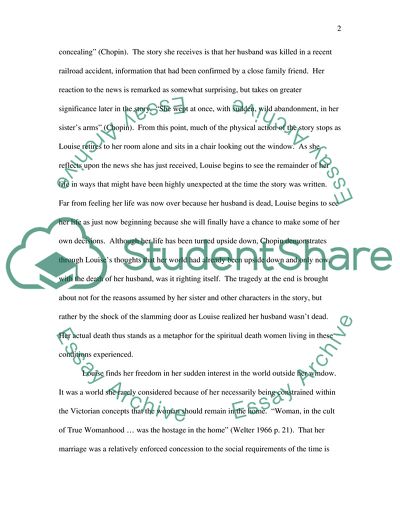Cite this document
(Feminist Themes in Kate Chopins The Story of an Hour Essay Example | Topics and Well Written Essays - 1500 words, n.d.)
Feminist Themes in Kate Chopins The Story of an Hour Essay Example | Topics and Well Written Essays - 1500 words. https://studentshare.org/gender-sexual-studies/1713963-feminist-analysis-of-kate-chopins-the-story-of-an-hour
Feminist Themes in Kate Chopins The Story of an Hour Essay Example | Topics and Well Written Essays - 1500 words. https://studentshare.org/gender-sexual-studies/1713963-feminist-analysis-of-kate-chopins-the-story-of-an-hour
(Feminist Themes in Kate Chopins The Story of an Hour Essay Example | Topics and Well Written Essays - 1500 Words)
Feminist Themes in Kate Chopins The Story of an Hour Essay Example | Topics and Well Written Essays - 1500 Words. https://studentshare.org/gender-sexual-studies/1713963-feminist-analysis-of-kate-chopins-the-story-of-an-hour.
Feminist Themes in Kate Chopins The Story of an Hour Essay Example | Topics and Well Written Essays - 1500 Words. https://studentshare.org/gender-sexual-studies/1713963-feminist-analysis-of-kate-chopins-the-story-of-an-hour.
“Feminist Themes in Kate Chopins The Story of an Hour Essay Example | Topics and Well Written Essays - 1500 Words”. https://studentshare.org/gender-sexual-studies/1713963-feminist-analysis-of-kate-chopins-the-story-of-an-hour.


